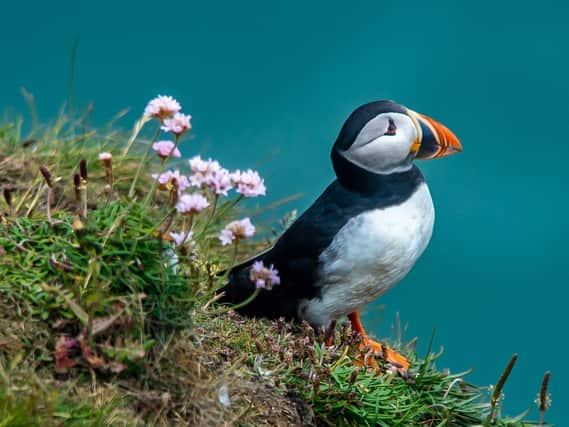Why the Puffins on Yorkshire's coast are sight to behold


Their popularity is due in no small part to their appearance - the colourful bills and teardrop eye markings make them seem somehow mournful, like sad clowns.
We imbue them with human characteristics, of course. Nevertheless, there’s no escaping the fact that many people are drawn towards these intriguing birds.
Advertisement
Hide AdAdvertisement
Hide AdThey have been popular with generations of bird watchers and wildlife photographers who know that the Bempton Cliffs nature reserve, which is run by the RSPB, is one of the best places in the country to come and see, hear and smell them.
The stretch of coastline between Flamborough Head and Filey is home to more than 250,000 seabirds and attracts visitors from across the world – it has even been referred to as the “Nou Camp of the bird world.”
The cliffs here are best known for the breeding seabirds, including Northern Gannet, Atlantic Puffin, Razorbill, common Guillemot and Black-legged Kittiwake.
It’s the Atlantic, or Common, Puffins, that many people want to see. These little birds only grow to 30cm and generally arrive on the cliffs from mid-April to the end of July, nesting in rock crevices to protect them from the worst of the elements.
Advertisement
Hide AdAdvertisement
Hide AdDespite their popularity, Puffins face an uncertain future with their numbers plummeting in former strongholds in the UK and Europe and the species is now on the red list of UK Birds of Conservation Concern.
One of the main threats to Puffins are the changes in distribution and numbers of small fish which they rely on for food, with pollution and climate change also believed to be factors.
So it is up to us to help ensure that sights like this continue for many years to come.
Technical Details: Nikon D5 camera, Nikon 300mm lens with a Nikon 1.4 teleconverter, 1/1000th second at f/4, ISO 125.
Comment Guidelines
National World encourages reader discussion on our stories. User feedback, insights and back-and-forth exchanges add a rich layer of context to reporting. Please review our Community Guidelines before commenting.